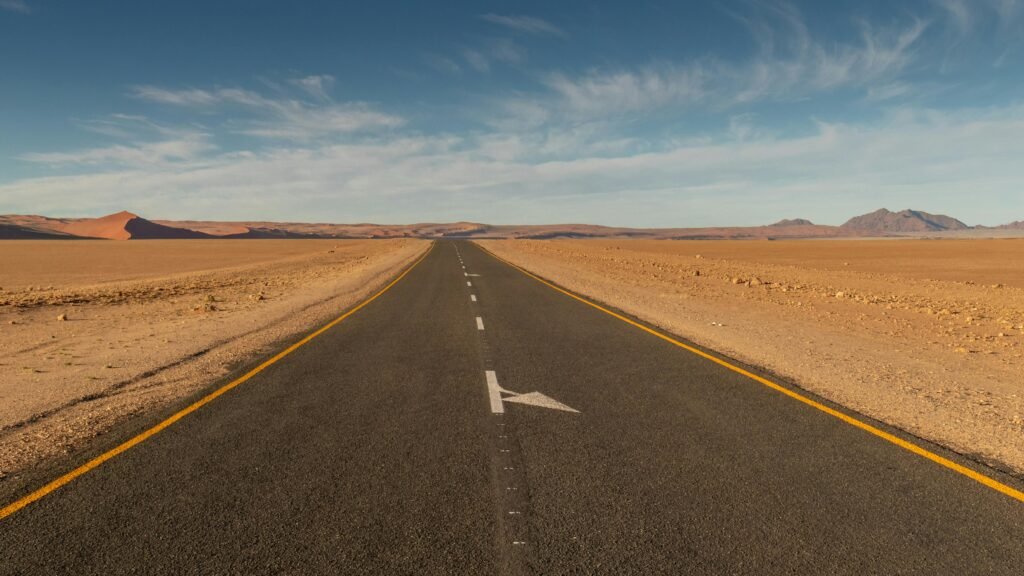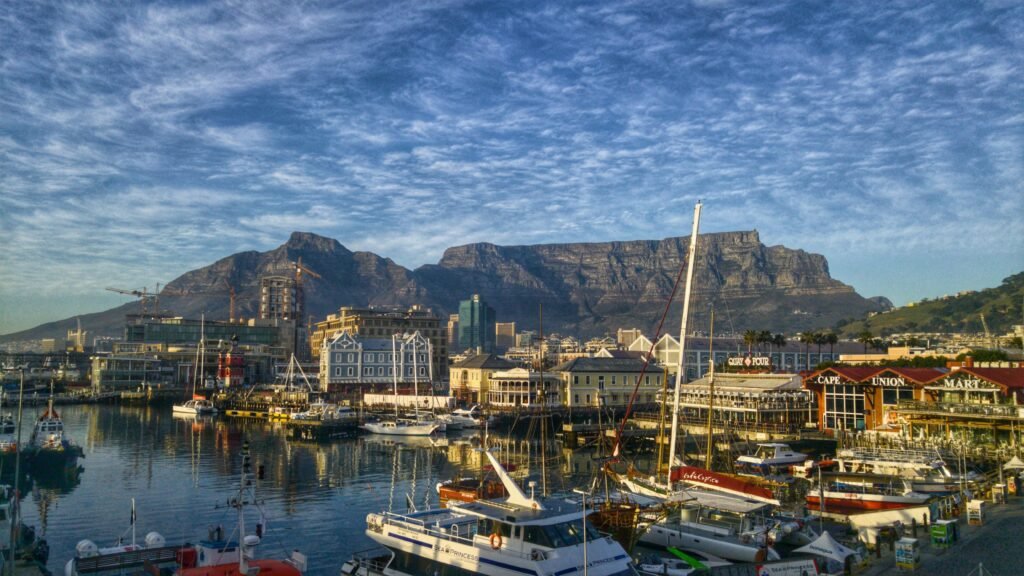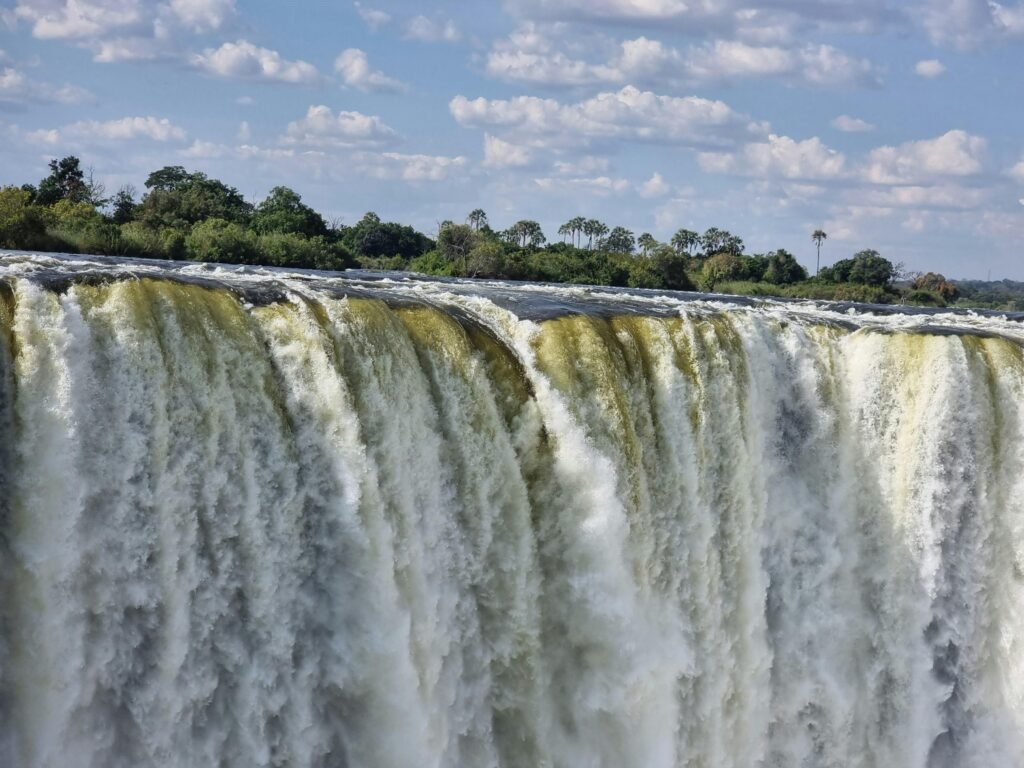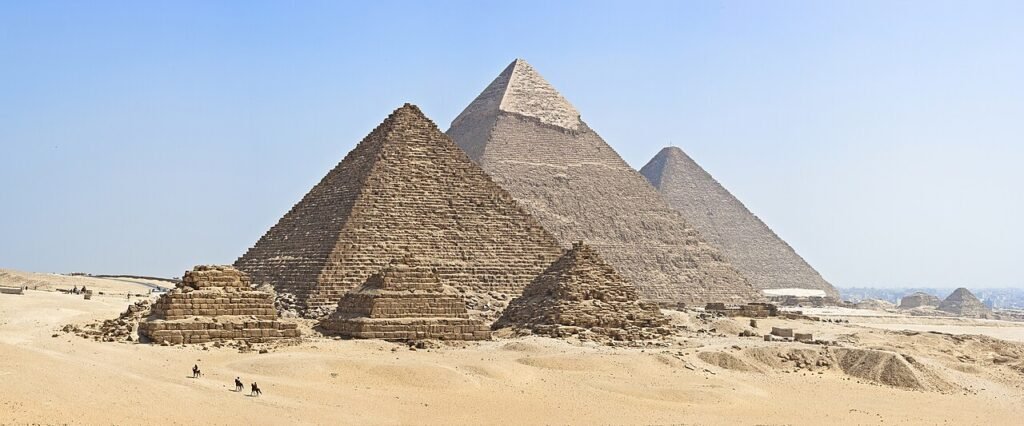
Sossusvlei Dunes: Few landscapes on Earth recalibrate your sense of scale quite like Sossusvlei. Here, in the southern reaches of Namibia’s Namib-Naukluft National Park, mountains of rust-red sand sculpted by Atlantic winds rise like frozen waves, their knife-edge ridges catching first light in a blaze of orange. Below them, bleached clay pans and the ebony skeletons of ancient camelthorn trees make a painterly counterpoint. Come for a single sunrise and you’ll leave with a lifetime’s worth of images and a deeper appreciation of desert ecology, conservation and the quiet power of remote places.
This guide is crafted for discerning travellers, families seeking wonder, couples chasing a show-stopping backdrop, and solo adventurers who prefer their horizons endless. It blends essential planning intel with insight, context and curated experiences so your time among the dunes is as seamless as it is unforgettable.
A Short History of an Ancient Desert
The Namib is often called the world’s oldest desert. Sossusvlei sits within the Namib Sand Sea, a UNESCO World Heritage site recognised as the planet’s only coastal desert with vast dune fields shaped by fog. Over millions of years, sediments travelled from southern Africa’s interior down great rivers to the Atlantic, were pushed north by ocean currents, then blew back ashore to gather in towering dunes. Two dune systems, an older, semi-consolidated foundation capped by younger, active dunes, create today’s striated giants and star-shaped summits.
The word “Sossusvlei” fuses Nama and Afrikaans: roughly, “dead-end marsh.” It refers to the point where the ephemeral Tsauchab River meets the march of sand and disappears into the pans. In rare, rain-soaked years, the river reaches Sossusvlei and the clay pan becomes a temporary lake, an event that makes headlines across southern Africa and rewards those lucky enough to witness it with mirror-still reflections of flame-coloured dunes.
Sossusvlei Dunes: Key Facts & Figures at a Glance
- Location: Namib-Naukluft National Park, near the settlement of Sesriem, southwest Namibia
- UNESCO status: Part of the Namib Sand Sea (inscribed 2013)
- Signature sights: Deadvlei, Sossusvlei pan, Big Daddy and Big Mama dunes, Dune 45, Hiddenvlei, Sesriem Canyon
- Heights: Big Daddy rises to well over 300 metres; Dune 45 tops out around the height of a 50-storey building
- Access: A sealed park road runs ~60 km from Sesriem to Sossusvlei; the last few kilometres are deep sand, 4×4 only (shuttles available)
- Best light: Sunrise and the 90 minutes after; again from late afternoon into sunset
- Seasonality: Pleasant, cooler, and clear from about April–October; hottest from late spring into early summer; winter nights can be near-freezing
The Essential Sights (and How to Experience Them)
Deadvlei: Nature’s Surrealist Masterpiece
A white clay pan framed by blazing dunes, Deadvlei is studded with long-dead camelthorn trees, charcoal silhouettes that have stood for centuries in air so dry they refuse to decay. Park at the 4×4 area (or take the shuttle) and walk roughly a kilometre across soft sand to reach the pan. Arrive at first light for strong shadow lines across the dunes and a cobalt sky; late afternoon brings warmer tones and fewer footsteps.
Tips for all travellers
- Families: Go early, bring wide-brim hats and more water than you think you’ll need. The walk is short but hot.
- Couples: Stay until the tour crowds thin; the park can feel wonderfully private by late afternoon.
- Solo travellers: Pack a light scarf against wind-blown sand and keep a pin on your car’s location.
Big Daddy (and Big Mama): Climbs with Big Pay-off
The ridge of Big Daddy is an irresistible line up to one of the tallest summits in Sossusvlei, expect a lung-pumping hour on soft sand. From the top, launch into a joyous, calf-deep run down the slipface straight to Deadvlei. Not up for the full ascent? Climb just partway along the ridge for epic views without overcommitting.
Dune 45: The Icon beside the Road
Named for its position 45 km from Sesriem, Dune 45 is a near-perfect isosceles of red sand sweeping above a flat pan. It’s the go-to sunrise climb if you’re entering from the main gate at first light. The ridge is steep but manageable; the views down the dune “valley” are classic Sossusvlei.
Sossusvlei & Hiddenvlei: Quiet Pans and Wide Skies
While Deadvlei steals the limelight, the Sossusvlei pan itself and nearby Hiddenvlei offer spacious compositions and a fraction of the foot traffic. In years of rain, Sossusvlei can hold water; otherwise, expect geometric mud patterns and scattered acacias.
Sesriem Canyon: A Geology Lesson You Can Walk Through
Just minutes from the park entrance, Sesriem Canyon is a narrow, walkable chasm carved by the Tsauchab River, with strata that read like pages of a desert history book. It’s a welcome, shady counterpoint to the dunes, ideal for a midday visit when the sand is hottest.
Planning Your Visit: Practicalities that Matter
Getting There
- By car (self-drive): Windhoek to Sesriem is roughly 300–330 km, typically 4.5–5.5 hours depending on route and road conditions. From Swakopmund, allow 4–5 hours for ~340 km via Solitaire. Expect long gravel stretches; puncture kits and a cautious driving pace are essential.
- By air: Light-aircraft transfers serve Sossusvlei-area airstrips from Windhoek and Swakopmund, time-efficient and stunningly scenic.
- Guided safaris: If you’d prefer someone else to handle logistics, reputable operators offer fly-in or vehicle-based itineraries that pair Sossusvlei with Etosha, Damaraland or the Skeleton Coast.
Park Gates & Early Access
There are two gates at Sesriem. The Outer (Main) Gate typically operates from dawn to dusk. The Inner (Desert) Gate, which controls access to the dune road, opens earlier and closes later than the outer gate. Guests staying inside the park (e.g., Sossus Dune Lodge, Dead Valley Lodge) can enter earlier and stay later, crucial if you want to be on a dune ridge as the sun breaks. Gate times vary with sunrise/sunset; confirm on arrival.
Road & Vehicle Notes
From Sesriem to the 4×4 car park near Deadvlei, the 60-km road is sealed, fast and straightforward. The final 4–5 km to Sossusvlei/Deadvlei is deep sand: high-clearance 4×4 only. If you’re in a 2×4 or prefer not to drive sand, use the official shuttle from the 2×4 car park. If you do self-drive, lower tyre pressures (and know how to reinflate), keep momentum in the soft patches, and never spin your wheels.
Permits, Fees & Hours
Buy your park permit at Sesriem. Keep it handy for checks at the inner gate and when exiting. Opening hours change seasonally; plan your climbs to finish before the return cutoff.
Safety & Comfort in the Heat
- Hydration & sun: Carry more water than you think you need, two litres per person is a sensible baseline for a short dune hike; more for longer climbs. Broad-brim hats, SPF 50+, sunglasses and loose, breathable layers are non-negotiable.
- Footwear: Closed-toe trainers or light hiking shoes work; expect hot sand by late morning.
- Navigation: The dune road is linear, but wind can erase footprints on pan walks, pin your car on a map app and note landmarks.
- Wildlife awareness: You may spot oryx (gemsbok), springbok, ostrich and larks. Give all animals space; this is their home.
- Drones: Don’t bring one into the park unless you’ve secured the necessary permits in advance; recreational flying is broadly prohibited in and around Namibia’s national parks.
Accessibility
The sealed road, many viewpoints and the Sesriem area are accessible to most travellers. Reaching Deadvlei requires a shuttle or 4×4 and a sandy walk of about a kilometre; for those with mobility challenges, ask lodges about guided access and the least demanding routes, or focus on Dune 45’s viewpoints and the spectacular drive itself.
Sossusvlei Dunes: When to Go (and What It’s Like)
- April–June: Clear, crisp mornings; warm days; glorious light. A sweet spot for comfort and photography.
- July–August: Peak cool season; cold nights (occasionally near freezing) and strong contrasts at sunrise. Popular – book early.
- September–November: Hot and often windy; dazzling skies but challenging midday heat. Ideal if you prioritise open space over cooler temps.
- December–March: Hottest months and the chance (still small) of thunderstorms. In rare years of good rains, the Tsauchab reaches Sossusvlei, turning the pan into a lake – a once-in-a-decade spectacle.
How to Spend Your Time: Two Smart Itineraries
1) One Perfect Day in Sossusvlei (Self-Drive or Shuttle)
- 05:00–06:00 – If you’re staying inside the park, join the early queue at the inner gate. Otherwise, aim to be first through the outer gate at dawn and head straight towards Dune 45.
- Sunrise – Dune 45 climb (45–60 minutes up). Photograph the shadow line as the dune’s ridge glows. Descend by sliding the slipface.
- Morning – Continue to the 4×4 car park. Shuttle or sand-drive the last stretch. Walk to Deadvlei for the classic compositions; if you have energy, ascend Big Daddy partway for a bird’s-eye view before racing down to the pan.
- Lunch – Return to Sesriem for a break (or picnic in a designated area).
- Afternoon – Explore Sesriem Canyon in the day’s heat; its narrow shade is bliss.
- Golden hour – Head to Elim Dune (close to Sesriem) for sweeping sunset light over plains and low ridges.
- After dark – If you’re staying inside the park or at a private reserve, stargazing is superb; this is one of the darkest, clearest skies on the continent.
Family tweak: Swap the Big Daddy climb for more time in Deadvlei and a gentler stroll to Hiddenvlei.
Photographers’ tweak: Reverse it, start at Big Daddy for first light, then Deadvlei silhouettes, saving Dune 45 for late afternoon back-light.
2) A 3-Day Sossusvlei & Namib Desert Loop
Day 1: Arrival via Solitaire
Wind your way through pastel plains to Sesriem, stopping at Solitaire for fuel and a slice of the settlement’s famous apple pie. Check into your lodge or campsite. Late-day stroll on Elim Dune to stretch the legs and catch sunset.
Day 2: Dunes Immersion
Pre-dawn departure for Deadvlei/Big Daddy. After your morning in the dune sea, retreat to the lodge for lunch and pool time. In late afternoon, photograph Sossusvlei or Hiddenvlei at leisure, or take a guided sundowner drive across a private reserve for secluded ridgelines and wildlife sightings.
Day 3: Canyon & Ballooning
Consider a sunrise hot-air balloon flight over the dunes; unparalleled perspectives that end with an alfresco champagne breakfast in the desert. Later, walk Sesriem Canyon and depart via the Naukluft foothills. If you’re looping north, overnight near NamibRand Nature Reserve for a star-laden finale.
Special Experiences Worth Planning Around
Hot-Air Ballooning at Sunrise
Few travel moments deliver the same hush as drifting above the Namib at first light, basket skimming shadowed ridges as the sun pours over the sand. Flights operate seasonally in calm morning conditions and typically include transfers, the flight (~1 hour) and a celebratory breakfast. Book well ahead.
Scenic Flights
From fixed-wing or helicopter, you’ll read the Namib’s patterns like a map: star-dune geometry, dry river braids, and the knife-edge seam where desert meets Atlantic surf. Operators in the Sossusvlei area and in Swakopmund/Walvis Bay offer 45- to 120-minute loops; photographers should request doors-off helicopters (subject to aircraft and operator).
Astronomy Under an Ink-Black Sky
This corner of Namibia rubs shoulders with the NamibRand International Dark Sky Reserve. Even without specialised gear, the Milky Way is vivid to the naked eye. Many lodges provide telescopes and guided stargazing – ask at check-in.
Where to Stay: From Under-Canvas to Ultra-Polished
Inside the park gates (maximum access)
- Sossus Dune Lodge (NWR): Timber-and-thatch chalets strung along a low ridge, with the signature perk of pre-sunrise and post-sunset dune access.
- Dead Valley Lodge: Contemporary tented suites with desert-facing decks. Also offers guided early/late excursions – ideal if photography is your north star.
Just outside the gates (excellent convenience)
- Sossusvlei Lodge: A consistently well-run base at the Sesriem entrance with a desert-facing terrace and an activity desk for drives, walks and flights.
- Desert Camp / Desert Quiver Camp: Stylish self-catering options that work beautifully for families and self-drivers.
- Sesriem Campsite (NWR): Budget-friendly and atmospheric, with front-row convenience for the morning dash.
Private reserves (spacious, exclusive feel)
- Wilderness Little Kulala / Kulala Desert Lodge: Set on the vast Kulala Wilderness Reserve, with a private access gate to the Sossusvlei dune road – handy for beating the rush. Rooms and service are polished; couples will love the star-beds.
- &Beyond Sossusvlei Desert Lodge: A design-forward desert retreat with superb astronomy, e-biking and guided walks. Remote, rarefied and a spectacular add-on for a celebratory trip.
Choosing your base
- Families: Prioritise easy gate access, shaded pools and flexible dining. Self-catering can work well.
- Couples: If the budget allows, a private-reserve stay buys quiet ridgelines, star-beds and a slower rhythm.
- Solo travellers: Lodges with active excursion programmes (balloons, guided canyon walks, sundowner drives) help you see more without the logistics overhead.
Where to Eat (and What to Expect)
The luxury lodges offer high-calibre, multi-course dining with a locavore lean, think game, fresh bakes, crisp salads. In Sesriem, Sossusvlei Lodge’s buffet-style dinners are a social affair; Desert Camp/Quiver Camp guests often braai at their units with provisions from Swakopmund/Walvis Bay or lodge-run grocery drops. At Solitaire, the roadhouse bakery is a must-stop both for fuel and that famous pie.
Photography & Responsible Travel
Light & timing
- Side-light along a dune ridge shapes depth; shoot the curve, not just the summit.
- Bring a mid-range zoom (24–105mm equivalent) plus a wider angle for Deadvlei. A longer lens compresses dune layers beautifully at sunset.
- Wind happens: a microfibre cloth for your front element and a rocket blower for your sensor will save the day.
Respect the landscape
- Don’t touch or climb the fossilised trees in Deadvlei, their preservation depends on their desiccation.
- Stick to existing paths on pans and keep to the hardened surfaces near vegetation; fragile desert soils recover slowly.
- Drones: assume no unless you’ve arranged all permits in advance through the civil aviation authority and relevant ministries. Lodges often request drone-free zones to protect the wilderness feel.
Beyond the Dunes: Building a Deeper Namibia Itinerary
Sossusvlei is the headline, but Namibia’s supporting cast is extraordinary:
- Swakopmund & Walvis Bay: Coastal dunes meet a briny lagoon rich with flamingos and pelicans. Pair living desert tours (beetles, chameleons, dune geckos) with sandboarding or marine safaris.
- Damaraland: Petrified forests, desert-adapted elephants and the gallery-like rock art of Twyfelfontein.
- Etosha National Park: A salt pan the size of a small country, teeming with wildlife in the dry season, lion at midday waterholes is a classic sight.
- Skeleton Coast: Otherworldly fog banks, shipwrecks and seal colonies; fly-in safaris reveal the coast’s scale and solitude.
- Fish River Canyon: One of Africa’s grandest canyons; sunrise at the main viewpoints is a worthy bookend to Sossusvlei’s dunes.
Frequently Asked Questions
How many days do I need?
Two nights is the minimum to comfortably see Deadvlei, climb a dune, visit the canyon and have a buffer for weather. Three gives room for a balloon flight, a second dawn and downtime.
Is it safe to self-drive?
Yes, with common-sense prep. Drive slowly on gravel, avoid night driving, carry plenty of water, and tell your lodge your route and ETA.
Can I climb any dune?
You’re free to climb dunes along the Sossusvlei road corridor unless signed otherwise. Favour ridgelines to reduce erosion; descending the slipface is fine fun and leaves minimal trace.
What about young kids?
Plenty of families love Sossusvlei. Choose a lodge with shade and a pool; plan early starts, midday rests and short walks. The park’s distances are big, so bring car activities and snacks.
Final Word
Sossusvlei’s magic is both immediate and cumulative: a shock of beauty at first sight, and then a growing fascination as you learn how fog feeds beetles, how rivers vanish into clay, and how wind writes new lines on ancient sand. Whether you’re here as a family forging shared memories, a couple turning a dream trip into reality, or a solo traveller who craves space and silence, the dunes deliver. Plan well, tread lightly and give yourself time; the Namib rewards unhurried travellers.


